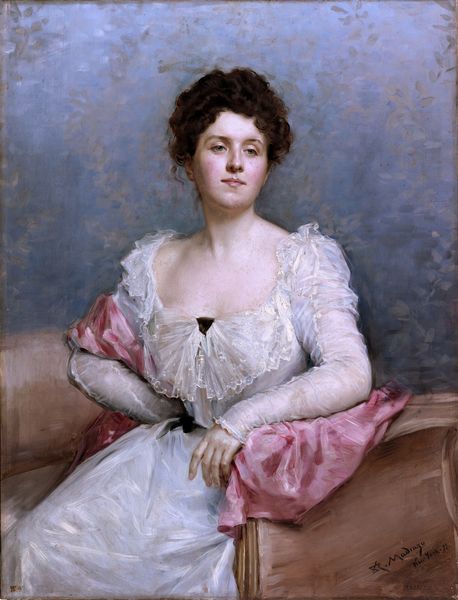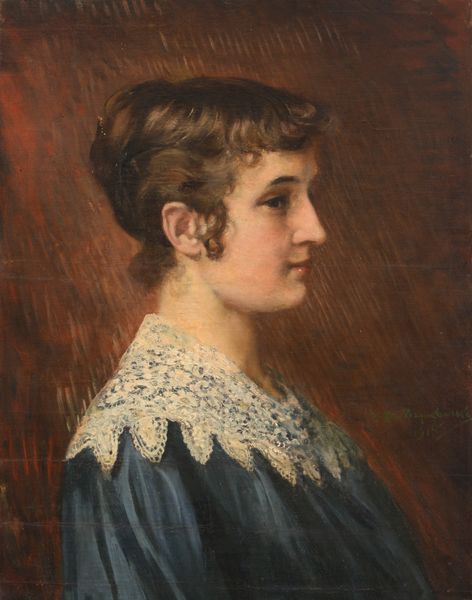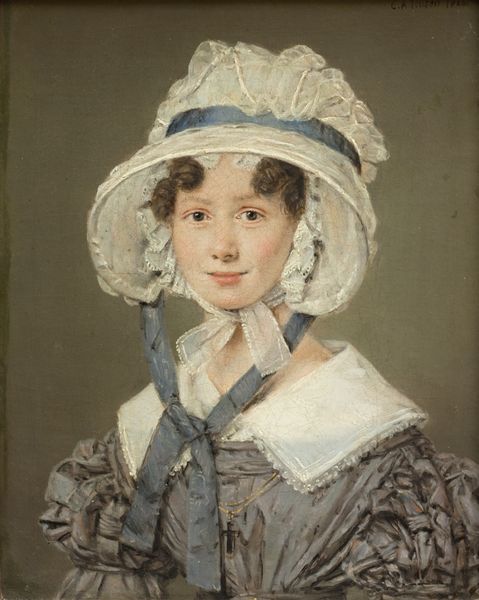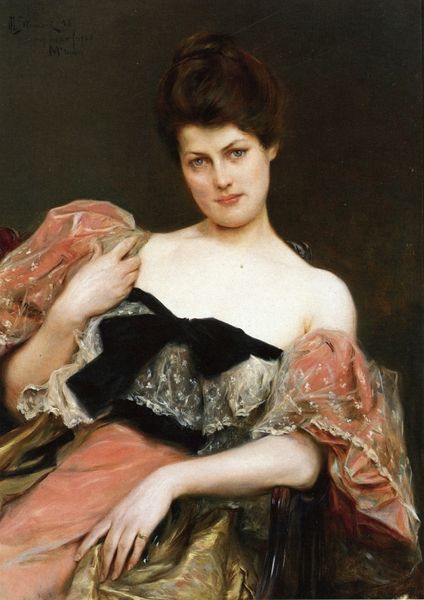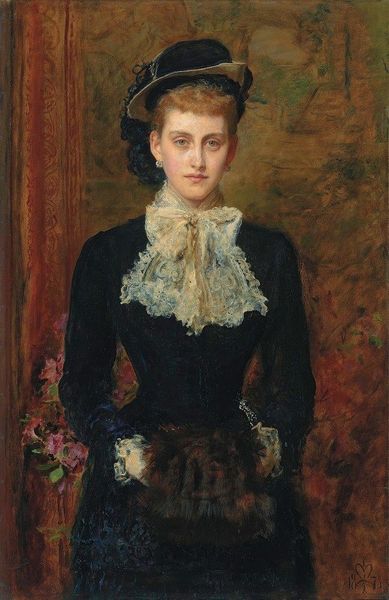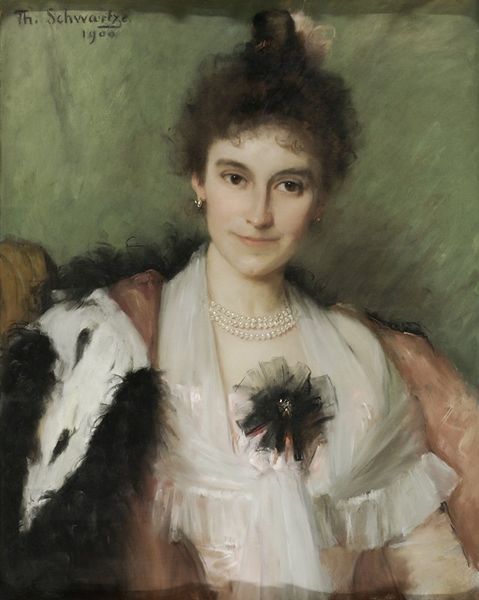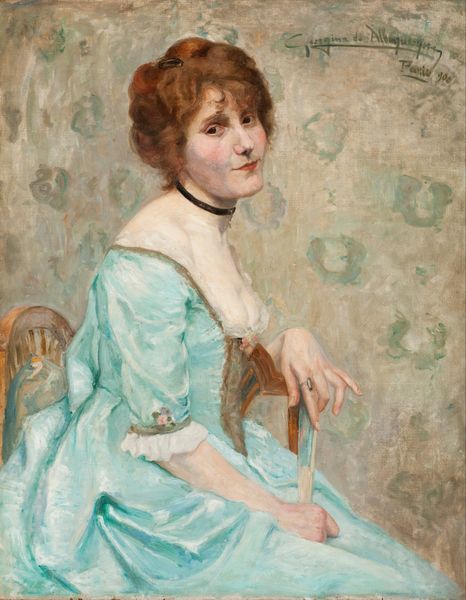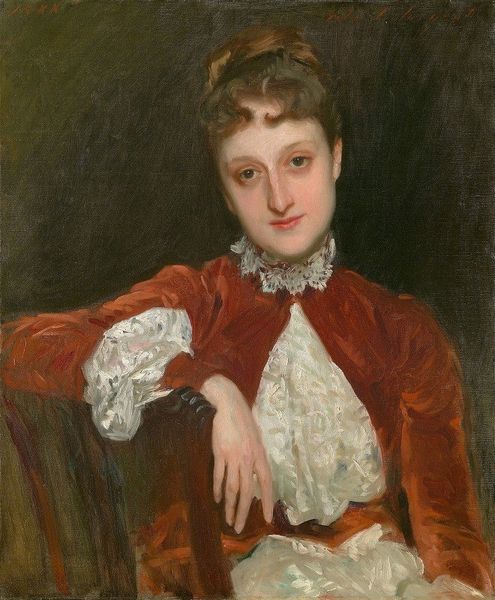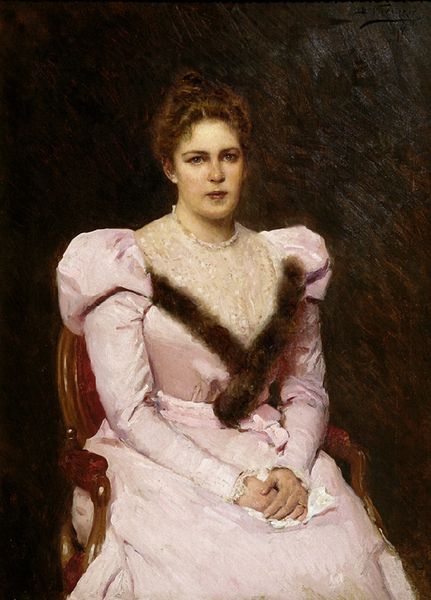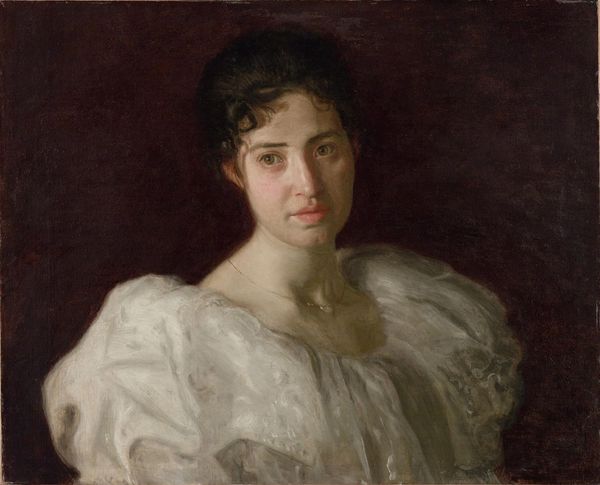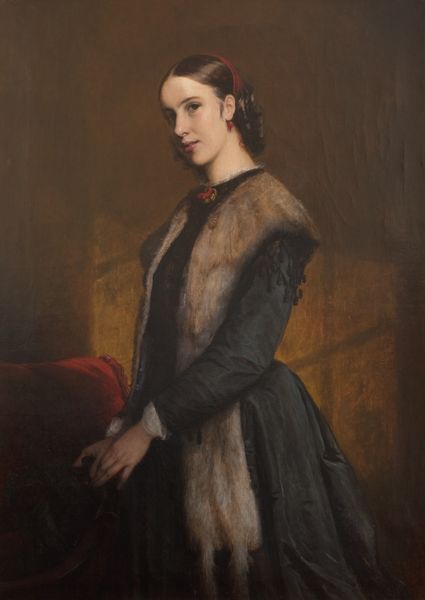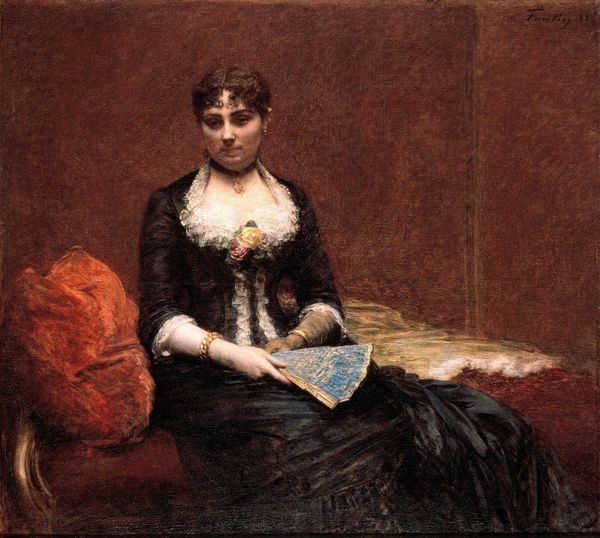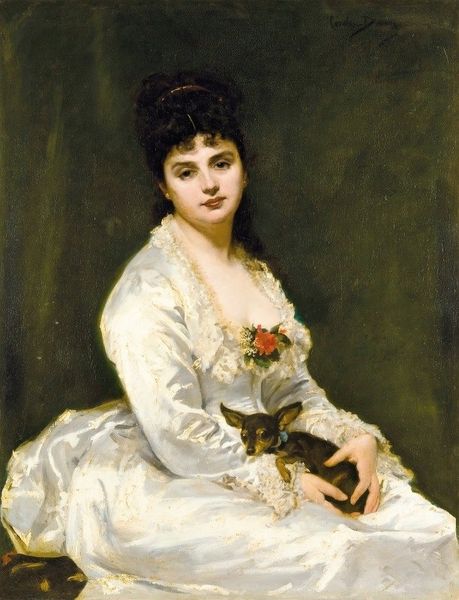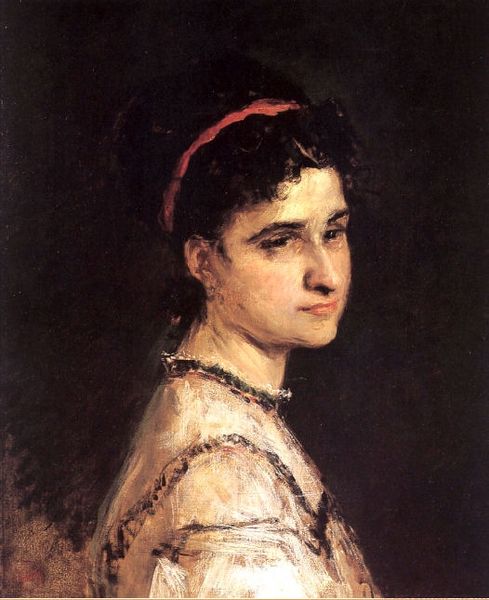
Dimensions: 76.8 × 64.1 cm (30 1/4 × 25 1/4 in.)
Copyright: Public Domain
Editor: This is Julian Alden Weir's "The Grey Bodice," painted in 1898. It’s oil on canvas, and the impasto technique really gives it a textured, almost unfinished quality. I'm struck by the sitter's direct gaze; she seems very aware of the viewer. What historical context should we consider when looking at this piece? Curator: Well, paintings like these are important precisely because of the society they reflect, and more so, actively constructed. Impressionism in America was, to a degree, tied to the growth of a wealthy upper class, and their desire for images that affirmed their social status, taste and “modernity.” The sitter’s gaze becomes then a performative element within a system that produced certain expectations around feminine beauty and poise. Editor: So, her self-awareness could be interpreted as a reflection of the expectations placed on women of that era? Curator: Exactly! Think about the carefully chosen clothing, the delicate lace. Weir is not just painting a woman; he’s depicting an aspirational vision of femininity, subtly conveying her status through details in dress and posture. And who controls this narrative of presentation? The artist, the sitter, or both? Editor: I see. The painting isn't simply capturing a likeness, it’s contributing to a broader cultural conversation. How would it have been displayed and viewed? Curator: Likely in private homes, reinforcing those ideals within domestic spaces and creating an environment of aspirational imitation. Paintings such as these were carefully marketed through galleries, helping to spread that cultural narrative about women, taste and power. The Art Institute would have undoubtedly positioned "The Grey Bodice" as a prime example of an artist embracing the zeitgeist. How interesting, then, that it lives in this public institution. Editor: It's fascinating to consider how a seemingly straightforward portrait engages with such complex societal forces. Thanks! Curator: Indeed, and remember to consider what work is made invisible because of what the galleries are selecting to present in these decades. It creates gaps that continue to define our expectations for paintings.
Comments
No comments
Be the first to comment and join the conversation on the ultimate creative platform.
